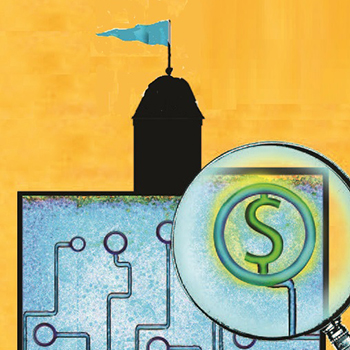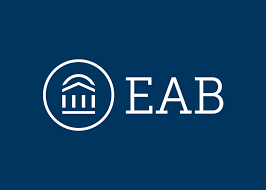
Opinions expressed in AGB blogs are those of the authors and not necessarily those of the institutions that employ them or of AGB.
Summer is finally here. You’ve finished the last campaign of the academic year, and now you are in the midst of finalizing your annual fundraising planning calendar. All eyes are turning to the kickoff of your fiscal year in earnest. Before you know it, you will be preparing for Family Weekend or Homecoming, and various fall and calendar year-end solicitations.
Then, after the joy of our fall and calendar year-end campus celebrations and the heady feeling of watching the daily tally of donors and dollars in December, winter will arrive. Those weeks between the post-holiday return to campus and spring break are when donors, volunteers, and prospects drop out of contact. A “business as usual” approach, even with volunteer engagement, face-to-face visits, and mass solicitations, is typically ineffective to start the calendar year.
While normal alumni donor responsiveness may be as cold as an icebox, the winter weeks aren’t hopeless. Quiet inboxes aren’t a reason to be inactive but a sign to take a break from your typical solicitation routine and find other ways to keep the relationship warm. Here are a few takeaways to prepare us to welcome winter and warm up the new year:
1. Say “Thank You”
Expressing thanks for all types of gifts is an important practice. One of the benefits of being thankful is that it enables us to see others’ generosity more readily and produce more of our own. When we celebrate the giving of others, it inspires more giving. In contrast, when a giver feels their gift is unappreciated, they are less likely to repeat or invest in more meaningful future gifts.
Having stewardship as a part of your annual fundraising plans is critical to donor retention and acquisition. We want donors to know that we appreciate their actions and want them to continue to give—again and again. Donor retention percentages skyrocket among those who have given for three or more consecutive years, so intentionally encourage this behavior. Development’s emphasis on gratitude helps intentionally build the pipeline of the future—today. Here are a few stewardship suggestions:
- Pick a segment such as second-year renewed donors or first-year reacquired donors to thank for their support.
- Use platforms such as YouVisit to provide a virtual tour of newer spaces on campus.
- Repurpose the phone-a-thon to thank current-year donors and/or so-called “LYBUNT” (Last Year but Unfortunately Not This) donors.
- Invite the president’s cabinet to participate. Ask each one to make five to 10 gratitude calls.
2. Make New Year’s Resolutions
With January comes the motivation to make improvements to mind, body, and soul. It’s a marker in time that allows us to make a concerted effort to learn from the past year and take a fresh approach. New year’s resolutions can help with long-term planning such as committing to an exercise routine in preparation for a half-marathon or adjusting eating and sleeping habits to address health concerns. Regardless, successful resolutions involve understanding where you are, establishing realistic aspirational goals, and determining the steps to get there.
While it may be too early to make dramatic changes to your annual development fundraising plans, it might be the right time to make tweaks to increase the likelihood of reaching your fiscal year-end goals. Mid-year reports can help teams better understand their effectiveness in the first half of the year and position them well to make informed decisions on alumni engagement strategies, deployment of staff, departmental restructuring, and rightsizing programs for the immediate and the long term. We utilize mid-year reports to assess our partners’ first-half performances by helping them answer questions such as:
- How well were alumni segments retained in comparison with benchmarks?
- How are each of your solicitation channels performing?
- Which appeals performed the best?
- Which constituencies or alumni community members stood out in their performance?
- Which donors also attended events, visited with a gift officer, or updated their contact information within the year?
3. Plan for the Future
During the winter months, make plans to connect with your institution’s long-lost constituents and remind them about the relationship. Instead of gifts as the top priority, engage alumni, parents, and friends with a personal approach and the future in mind. Use January and February to set up a robust March and April of visits to supplement the donors and volunteers whom you know will occupy your calendar. Your Day of Giving is a perfect reason for a sense of urgency in scheduling. If you do not have AI modeling to help, here are a few ideas on finding future appointments and donors:
- Review action reports for overdue follow-up meetings.
- Reconnect with young alumni who served as guest speakers or weren’t a philanthropic priority when you met them at an event years ago.
- Identify alumni who consistently don’t respond to solicitations or attend development events but are recommended by your board, development leadership, or volunteers.
- Engage subsets of the community where you would normally say “we don’t have time to focus on them.” Use this time to focus on them. Avoid prioritizing young alumni, if possible, because they are unforgettable. Consider other unengaged affinity groups based on geography, race and ethnicity, major/undergraduate college, and professional industry.
Don’t let the winter chill intimidate you. Make the most of the time and turn a normally unresponsive few weeks into a productive season of engagement.
Julie Solomon, Managing Director, Advancement Marketing Services at EAB
With Thanks to AGB Mission Sponsor: EAB



